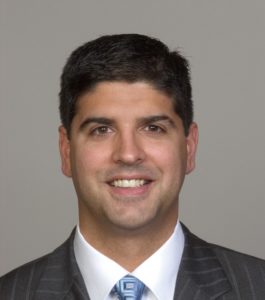

Everyone has been celebrating that 2020 is over, and who can blame them? Yet, I can’t help think the legal issues facing long term care in 2020 won’t necessarily go away in 2021.
Some of the lingering issues are problems, and some are just changing the way facilities operate, sometimes for the better. Here is a sampling of what to expect in 2021 in long-term care.
COVID-19 fallout
While facilities did their best to combat COVID-19 in the nursing home setting in 2020, unquestionably, more remains to be done. With infection control tackled and addressed in 2020, now facilities have to maintain compliance with infection control measures without letting up, without showing any signs of pandemic fatigue. This continues to be a challenge in 2021, especially among recent surges across the country.
Also, with the vaccine rolling out, slowly as it is, facilities still need to think about measures on how to administer the vaccine, and which of their employees and staff will or will not receive a shot. A main challenge for facilities in 2021 is what their vaccine policy will look like.
For example, will certain employees remain working from home (perhaps due to state governmental orders), and if so, for how long? How will the facility handle staff who do not wish to receive a vaccine? How do they handle staff requests to deny vaccination based on religious, medical or other grounds? What reasonable accommodations can be made for employees who refuse the vaccine?
Are mandatory employee vaccination policies the way to go, or is it better to keep it voluntary with the hope that frontline staff will agree to take the vaccine for the protection of the facility and its residents? These and more vaccine-related questions are what we are assisting our clients with so far in 2021.
Also, facilities will have to educate their staff and residents about the vaccine, which takes time and resources. In the process, providers will need to explain that mere vaccination does not mean the facility, staff and residents can let their guard down. Continued infection control measures will likely need to continue in 2021, all in accordance with the myriad state, local and federal guidances.
And then, just when we thought the pandemic would be eradicated with the rollout of the vaccine in 2020, we are faced with a new and possibly scarier reality in 2021: the COVID-19 variant, also known as the B117 strain! This form of COVID-19 purports to be even more infectious.
The variant last week appeared in the upper Midwest and has been cited in at least 67 cases in nine states, including California, Colorado, Florida, Indiana, New York and Texas, according to the Centers for Disease Control and Prevention. So 2021 will have us all looking and waiting on what is next with the variant, and whether nursing homes will require perhaps even greater infection control measures to prevent its spread.
Telehealth continues
While 2020 was a banner year for telehealth proliferation due to the pandemic, it appears 2021 will continue to see an uptick. As of now, there is not enough information to determine whether an individual who may be fully vaccinated in 2021 has the ability to spread COVID-19 despite his or her vaccination. For that reason, many facilities may turn to continued or increased telehealth services for residents, both before resident vaccinations are completed and even for a while afterwards.
Also in 2021, nursing homes will continue to see benefits from their investments into electronic medical records. To date, EMRs have been used to assist and implement effective telehealth programs in nursing homes, but their benefits go way beyond that. Companies like PointClickCare, MatrixCare, CPSI and others have quickly adapted in 2020 to create and adjust their robust EMRs for nursing homes to account for the pandemic.
Whether it is up-to-date testing information, infection control or contact tracing, EMRs have adapted quickly to assist facilities in combating the pandemic and keeping a sound legal record of successes.
With all the focus on EMRs and telehealth, there needs to be more focus on legal compliance with HIPAA, cybersecurity and protecting nursing homes from ransomware and other cybersecurity attacks. On Jan. 5, U.S. officials announced Russia was behind a massive and ongoing cyber attack that compromised key government and private-sector systems across the country. If our own government is susceptible to these huge cyberattacks, certainly nursing homes need to be weary of similar hacking attacks and remain even more vigilant.
Compliance from ALL THAT MONEY!
With the CARES Act Provider Relief Fund and Paycheck Protection Program loans being distributed in 2020, providers now must worry about reporting, whether some or all of their PRF or PPP money will have to be returned or forgiven, and whether civil money penalties may be imposed for improper use. It should be no surprise to readers of McKnight’s Long-Term Care News that we are expecting high levels of government investigations and enforcement in 2021 for nursing home use of PRF and PPP monies.
If anything, we have to remain positive in 2021. After all, the hardest part appears to be behind us.
But what nursing homes learned in 2020 — adapting quickly, safeguarding residents, changes in technology — will certainly be useful lessons for nursing homes to survive the challenges of 2021.
Neville M. Bilimoria is a partner in the Chicago office of the Health Law Practice Group and member of the Post-Acute Care And Senior Services Subgroup at Duane Morris LLP; [email protected].





